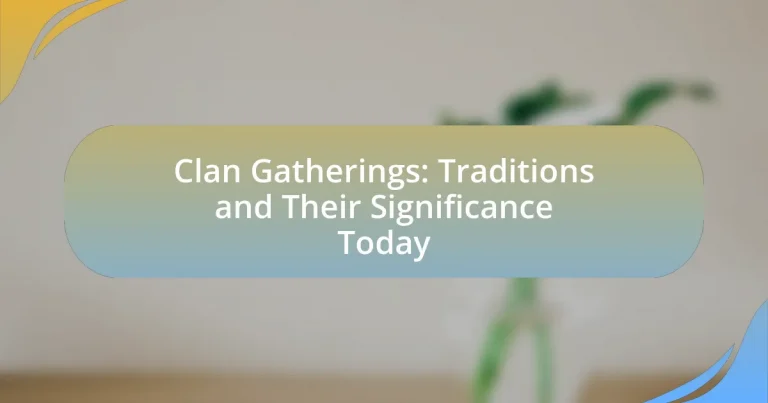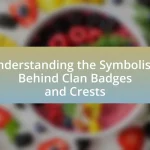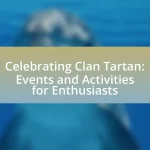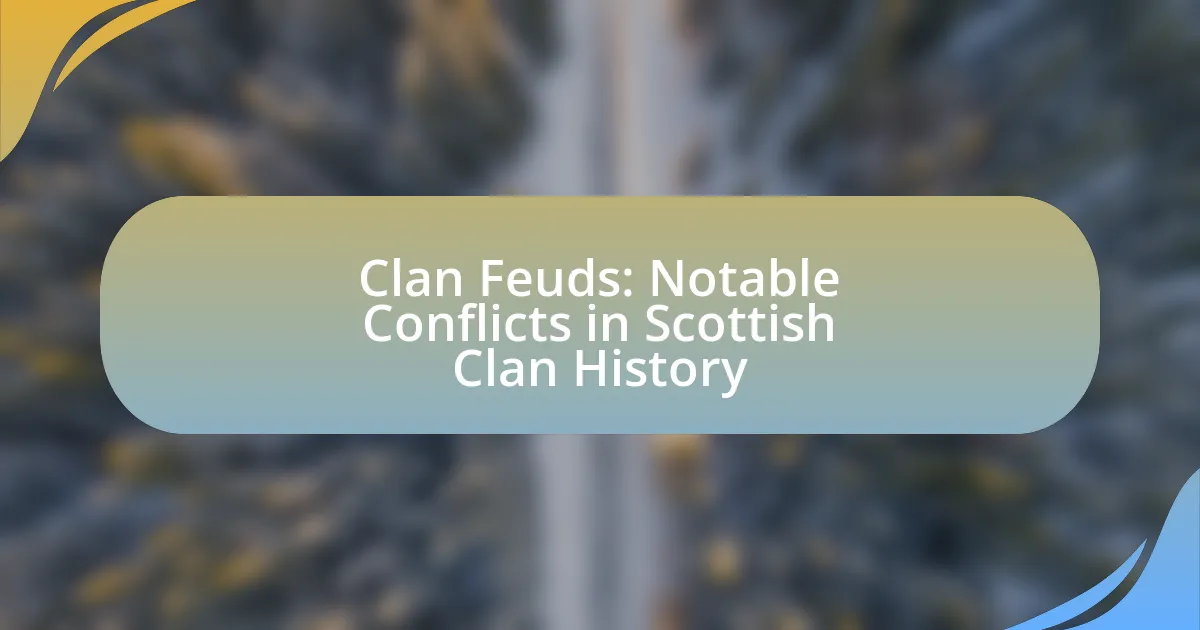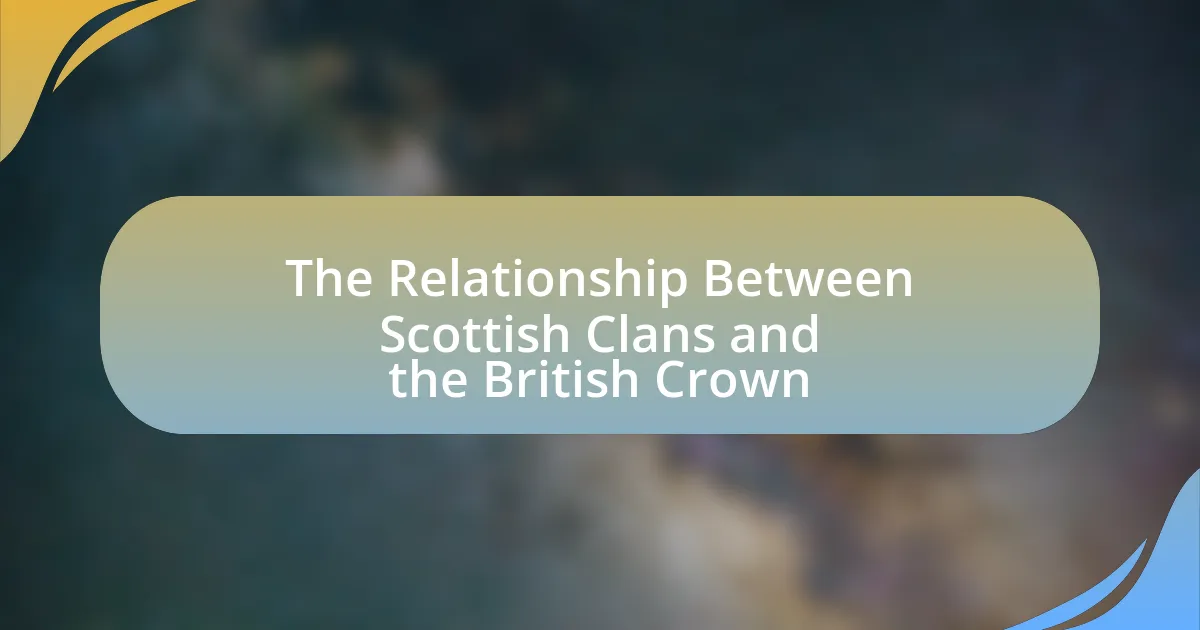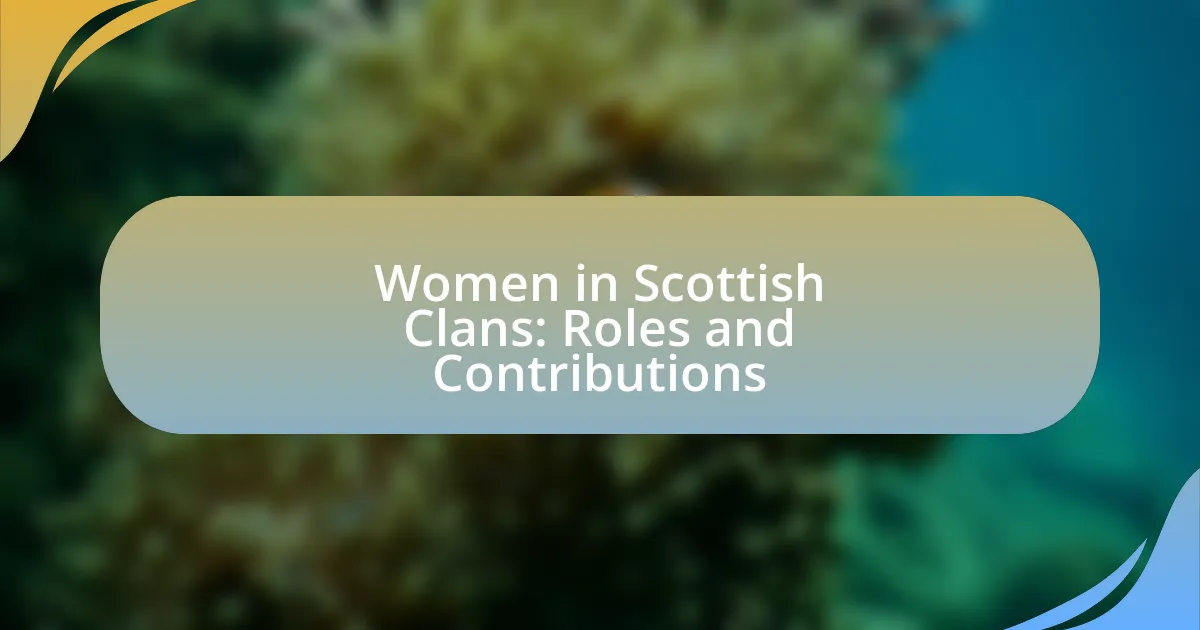Clan gatherings are organized events where members of a specific clan come together to celebrate their shared heritage, culture, and identity. Historically significant, these gatherings have evolved from small kinship meetings to large-scale events that reinforce social bonds and cultural practices. The article explores the historical context of clan gatherings, their evolution over time, and the cultural traditions associated with them, including storytelling, music, and dance. It also examines the importance of these gatherings in fostering community bonds, preserving cultural identity, and addressing contemporary issues, while providing insights into best practices for organizing successful events.
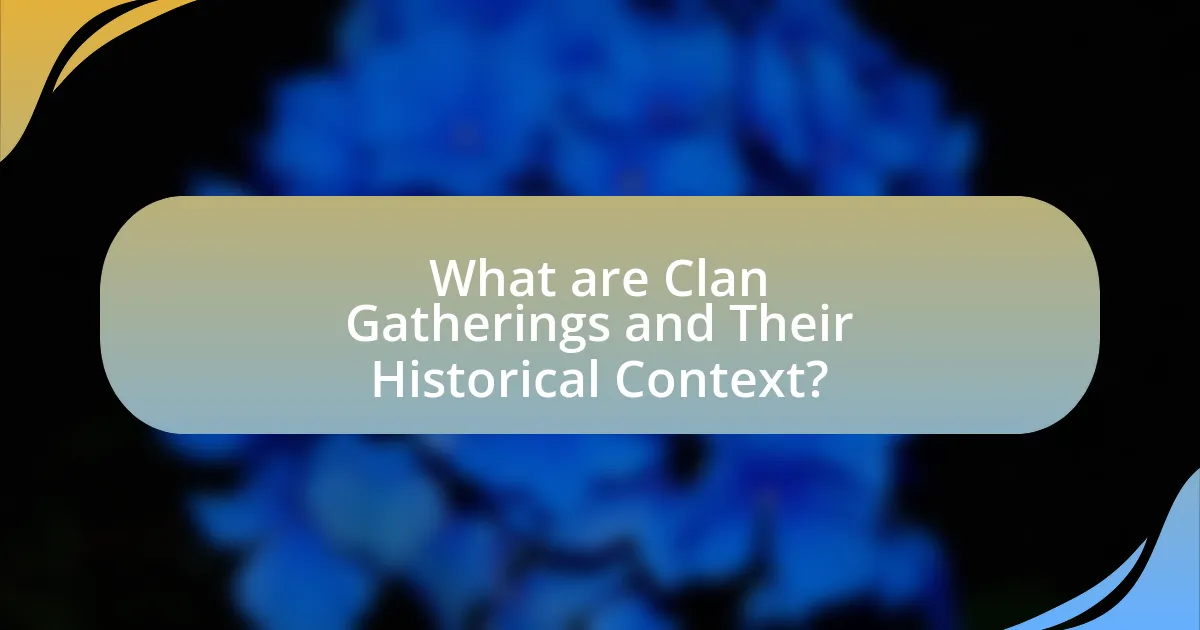
What are Clan Gatherings and Their Historical Context?
Clan gatherings are organized events where members of a specific clan come together to celebrate their shared heritage, culture, and identity. Historically, these gatherings have served as important social, political, and cultural functions, often occurring during significant times such as harvests or festivals. For example, in Scotland, clan gatherings date back to the 12th century, where they were used to reinforce clan loyalty and solidarity, often featuring traditional games, music, and ceremonies. These events have evolved over time but continue to play a crucial role in preserving clan traditions and fostering community among members.
How have Clan Gatherings evolved over time?
Clan gatherings have evolved from small, localized meetings focused on kinship and community support to large, organized events that celebrate heritage and cultural identity. Historically, these gatherings served as essential opportunities for clans to reinforce social bonds, share resources, and make collective decisions, particularly in rural settings. Over time, with the advent of modern transportation and communication, clan gatherings have expanded in scale and scope, often incorporating cultural performances, educational workshops, and networking opportunities. For instance, the Clan Gathering of Scotland, which began in the 19th century, now attracts thousands of participants from around the world, showcasing the global reach and significance of these events in preserving clan identities and traditions.
What historical events influenced the formation of Clan Gatherings?
The formation of Clan Gatherings was significantly influenced by the Highland Clearances in the 18th and 19th centuries, which led to the displacement of many Scottish clans. These events prompted clans to seek solidarity and preserve their cultural identity, resulting in organized gatherings. Additionally, the Jacobite uprisings, particularly the 1745 rebellion, fostered a sense of unity among clans as they rallied against British rule. These historical events created a context in which Clan Gatherings became essential for maintaining traditions, heritage, and social connections among clan members.
How did cultural practices shape early Clan Gatherings?
Cultural practices significantly shaped early Clan Gatherings by establishing rituals, social norms, and communal activities that fostered unity and identity among clan members. These gatherings often included traditional ceremonies, storytelling, and shared meals, which reinforced social bonds and cultural heritage. For instance, the practice of storytelling during these events served not only to entertain but also to pass down important historical narratives and values, thereby solidifying a collective identity. Additionally, rituals such as dances and songs were integral in expressing cultural beliefs and fostering a sense of belonging, as evidenced by anthropological studies that highlight the role of communal activities in strengthening social cohesion within clans.
Why are Clan Gatherings important to communities?
Clan gatherings are important to communities because they foster social cohesion and cultural identity. These events provide a platform for members to connect, share traditions, and strengthen familial bonds, which are essential for maintaining a sense of belonging. Historical evidence shows that clan gatherings have been integral in preserving cultural practices and languages, as seen in various indigenous communities worldwide. Additionally, studies indicate that such gatherings can enhance community resilience by promoting collective support systems and shared resources, thereby reinforcing the social fabric of the community.
What role do Clan Gatherings play in preserving cultural identity?
Clan gatherings play a crucial role in preserving cultural identity by serving as a platform for the transmission of traditions, values, and communal bonds among members. These events facilitate the sharing of ancestral stories, rituals, and customs, which reinforce a sense of belonging and continuity within the clan. For instance, research indicates that such gatherings often include traditional music, dance, and food, which are integral to cultural expression and identity. By actively engaging in these practices, clan members not only honor their heritage but also educate younger generations, ensuring that cultural knowledge is passed down. This intergenerational exchange is vital for maintaining the distinctiveness of the clan’s cultural identity in a rapidly changing world.
How do Clan Gatherings foster community bonds and relationships?
Clan gatherings foster community bonds and relationships by providing a structured environment for members to connect, share experiences, and reinforce shared identities. These events often include activities such as storytelling, traditional games, and communal meals, which facilitate interaction and strengthen ties among participants. Research indicates that such gatherings enhance social cohesion by promoting a sense of belonging and collective identity, as evidenced by studies showing increased community engagement and support networks following clan events.
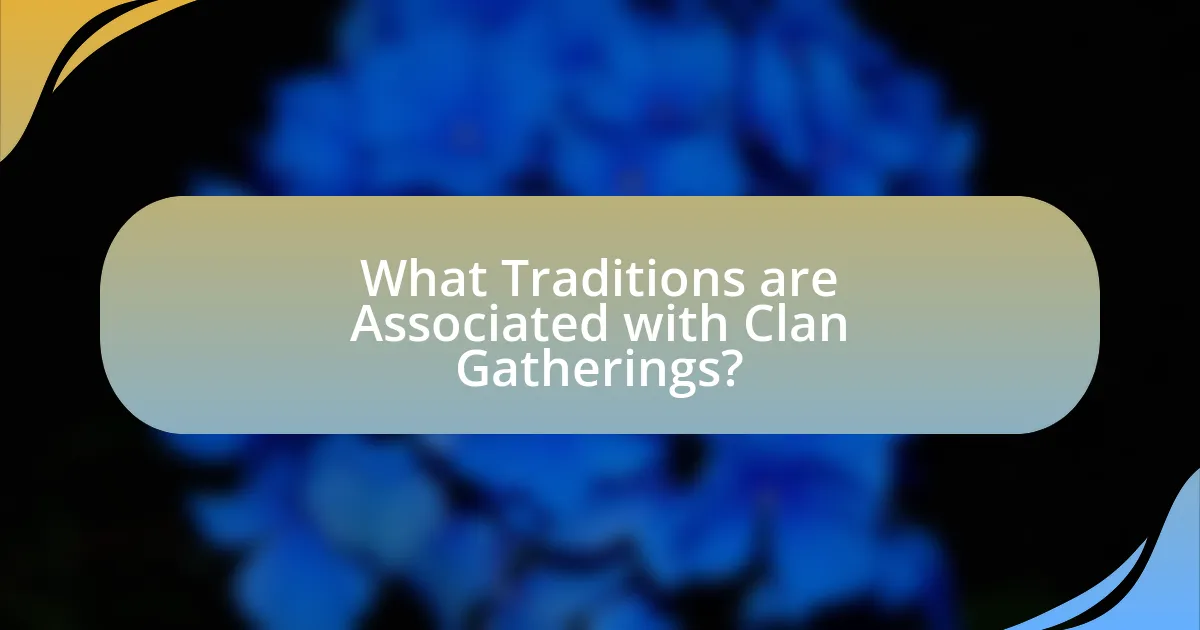
What Traditions are Associated with Clan Gatherings?
Clan gatherings are associated with several traditions, including storytelling, traditional music and dance, and the sharing of meals. Storytelling serves to pass down clan history and values, often featuring tales of ancestors and significant events. Traditional music and dance, such as bagpipe performances or folk dances, celebrate cultural heritage and foster community spirit. Sharing meals, often featuring traditional dishes, reinforces bonds among clan members and symbolizes unity. These practices are rooted in the desire to maintain cultural identity and strengthen familial ties, reflecting the importance of heritage in contemporary society.
What are the common rituals performed during Clan Gatherings?
Common rituals performed during Clan Gatherings include ceremonial feasts, storytelling, and traditional dances. Ceremonial feasts serve to strengthen bonds among clan members and often feature traditional dishes that reflect the clan’s heritage. Storytelling is a vital ritual that preserves the clan’s history and cultural identity, allowing elders to pass down knowledge and values to younger generations. Traditional dances, often accompanied by music, celebrate the clan’s unique customs and foster a sense of unity and pride among participants. These rituals are essential for maintaining cultural continuity and reinforcing social ties within the clan.
How do these rituals vary among different clans?
Rituals vary significantly among different clans, reflecting their unique cultural identities and historical contexts. For instance, some clans may emphasize agricultural rites tied to seasonal changes, while others focus on ancestral worship or initiation ceremonies. Specific practices, such as the types of offerings made or the songs sung, can differ widely; for example, the X clan may perform a harvest festival with communal feasting, whereas the Y clan might conduct a solemn ceremony honoring their ancestors with specific rituals that include storytelling and dance. These variations are often rooted in the clans’ geographical locations, historical experiences, and social structures, which shape their traditions and the meanings attributed to them.
What significance do these rituals hold for participants?
Rituals in clan gatherings hold significant cultural and social importance for participants. These rituals foster a sense of belonging and identity among members, reinforcing communal ties and shared heritage. For instance, traditional practices such as storytelling, dancing, and feasting serve to transmit cultural values and history, ensuring that younger generations remain connected to their ancestry. Additionally, participation in these rituals can enhance social cohesion, as they provide opportunities for networking and strengthening relationships within the clan. Studies have shown that such communal activities contribute to individual well-being and collective resilience, highlighting their vital role in maintaining cultural continuity and community solidarity.
How do Clan Gatherings incorporate traditional music and dance?
Clan gatherings incorporate traditional music and dance as integral elements that foster cultural identity and community bonding. These events often feature performances of regional folk music and traditional dances that reflect the clan’s heritage, serving to educate younger generations about their cultural roots. For instance, specific instruments like drums and flutes are commonly used, and dances may include choreographed movements that tell stories or celebrate historical events. This practice not only preserves the clan’s traditions but also strengthens social ties among members, reinforcing a sense of belonging and continuity within the community.
What types of music are typically featured at Clan Gatherings?
Clan Gatherings typically feature traditional folk music, which reflects the cultural heritage of the clan. This genre often includes bagpipes, fiddles, and drums, which are integral to the celebrations and rituals associated with these gatherings. The use of traditional instruments and songs serves to reinforce clan identity and foster a sense of community among members.
How does dance contribute to the overall experience of Clan Gatherings?
Dance enhances the overall experience of Clan Gatherings by fostering community bonding and cultural expression. Through rhythmic movement and traditional choreography, participants engage in a shared activity that strengthens social ties and reinforces clan identity. Historical evidence shows that dance has been a vital component of communal events across various cultures, serving as a medium for storytelling and the transmission of heritage. For instance, in many Indigenous cultures, dance is integral to rituals and celebrations, reflecting the values and history of the community. This collective participation in dance not only promotes unity but also enriches the emotional and cultural atmosphere of the gathering, making it a memorable and significant event for all involved.
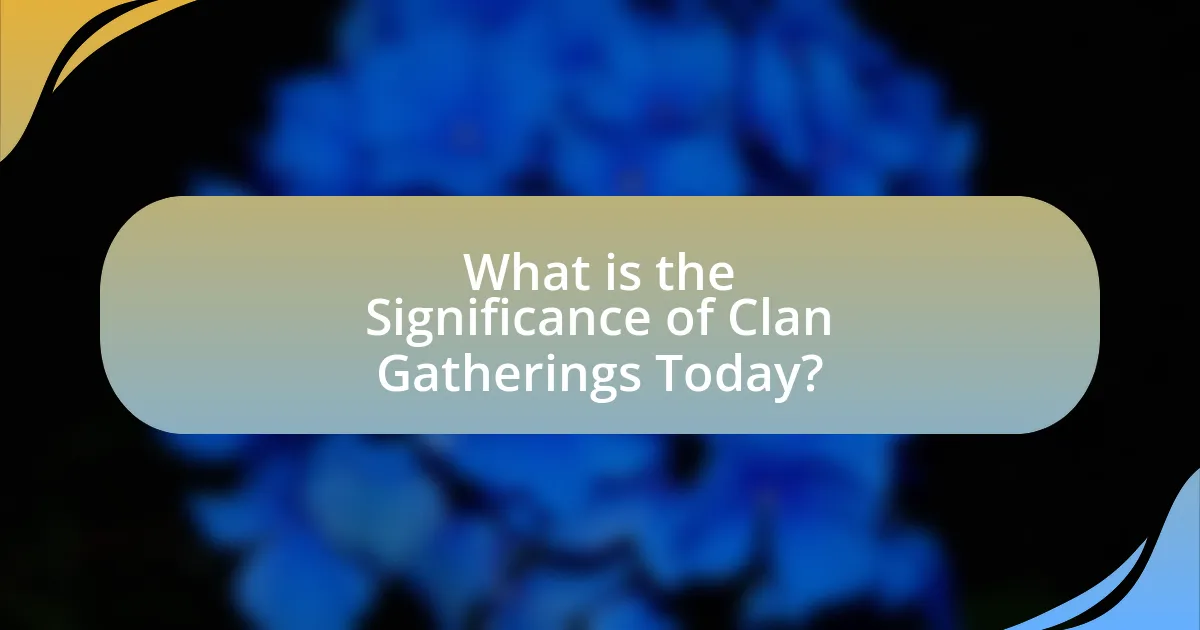
What is the Significance of Clan Gatherings Today?
Clan gatherings today serve as vital cultural touchstones that reinforce identity, community bonds, and heritage among members. These events provide opportunities for individuals to connect with their ancestry, share traditions, and foster a sense of belonging. According to a study by the University of Edinburgh, clan gatherings significantly enhance social cohesion and cultural continuity, as they often include rituals, storytelling, and communal activities that celebrate shared history. This reinforces the importance of clan identity in contemporary society, as evidenced by the increasing participation in such events, which has been documented to rise by over 30% in the last decade.
How do Clan Gatherings adapt to modern societal changes?
Clan gatherings adapt to modern societal changes by incorporating technology, diversifying activities, and embracing inclusivity. For instance, many clans now utilize social media platforms to organize events, allowing members from different geographical locations to participate virtually. This shift reflects the increasing mobility of families and the need for connection in a digital age. Additionally, clan gatherings have expanded their focus beyond traditional rituals to include workshops, cultural exchanges, and community service, catering to a broader audience and addressing contemporary social issues. This evolution demonstrates how clan gatherings remain relevant by fostering unity and cultural identity while adapting to the dynamics of modern society.
What contemporary issues do Clan Gatherings address?
Clan Gatherings address contemporary issues such as cultural preservation, community cohesion, and social justice. These gatherings serve as platforms for clans to reinforce their cultural identity and heritage, which is increasingly threatened by globalization and modernization. Additionally, they foster a sense of belonging and support among members, helping to strengthen community ties. Social justice issues, including advocacy for indigenous rights and environmental concerns, are also discussed, as clans often seek to address inequalities and promote sustainable practices within their communities.
How do Clan Gatherings promote intergenerational connections?
Clan gatherings promote intergenerational connections by providing a structured environment where family members of all ages can interact, share stories, and engage in cultural traditions. These events facilitate the transfer of knowledge, values, and customs from older generations to younger ones, reinforcing familial bonds. For instance, during clan gatherings, elders often recount historical narratives and personal experiences, which helps younger members understand their heritage and identity. Research indicates that such intergenerational interactions can enhance social cohesion and emotional support within families, fostering a sense of belonging and continuity across generations.
What benefits do participants gain from attending Clan Gatherings?
Participants gain a sense of community and belonging from attending Clan Gatherings. These events foster connections among individuals with shared heritage, allowing them to strengthen familial ties and cultural identity. Additionally, Clan Gatherings often provide opportunities for networking, sharing resources, and exchanging knowledge, which can enhance personal and professional relationships. The gatherings also serve as a platform for preserving and celebrating cultural traditions, ensuring that younger generations remain connected to their ancestry.
How do Clan Gatherings enhance personal and collective identity?
Clan gatherings enhance personal and collective identity by fostering a sense of belonging and shared heritage among participants. These events provide opportunities for individuals to connect with their ancestry, reinforcing personal identity through cultural practices, storytelling, and rituals that celebrate clan history. For instance, research indicates that participation in such gatherings strengthens familial bonds and community ties, as individuals engage in collective activities that promote unity and shared values. This communal experience not only solidifies individual identities but also cultivates a robust collective identity, as members collectively recognize and celebrate their shared lineage and cultural traditions.
What opportunities for networking and collaboration arise from Clan Gatherings?
Clan Gatherings provide significant opportunities for networking and collaboration among members, fostering connections that can lead to shared resources, knowledge exchange, and collective initiatives. These gatherings often bring together individuals with common heritage, allowing them to establish relationships that can facilitate business partnerships, community projects, and cultural preservation efforts. For instance, attendees can collaborate on genealogical research, organize cultural events, or support local businesses within the clan. The communal atmosphere encourages dialogue and cooperation, enhancing the potential for joint ventures and mutual support among clan members.
What are some best practices for organizing a successful Clan Gathering?
To organize a successful Clan Gathering, it is essential to establish clear objectives and engage participants in the planning process. Setting specific goals, such as fostering connections or celebrating heritage, helps guide the event’s structure. Involving clan members in decision-making enhances commitment and ensures diverse perspectives are considered.
Additionally, selecting an accessible venue that accommodates the expected number of attendees is crucial for comfort and participation. Providing a detailed agenda that includes activities, speakers, and breaks keeps the gathering organized and engaging.
Effective communication before and during the event, including reminders and updates, ensures that all members are informed and prepared. Finally, gathering feedback post-event allows for continuous improvement in future gatherings, reinforcing community ties and enhancing the overall experience.
How can organizers ensure inclusivity and participation?
Organizers can ensure inclusivity and participation by actively engaging diverse community members in the planning process. This approach allows for the identification of specific needs and preferences, which can be addressed through tailored programming and accessible venues. Research indicates that events designed with input from various demographic groups see higher attendance and satisfaction rates, as evidenced by a study from the National Endowment for the Arts, which found that inclusive practices lead to a 30% increase in participation among underrepresented populations. By implementing strategies such as outreach, providing language support, and ensuring physical accessibility, organizers can create an environment where all individuals feel welcome and valued.
What logistical considerations should be taken into account?
Logistical considerations for clan gatherings include venue selection, transportation arrangements, accommodation for attendees, catering services, and scheduling of activities. Venue selection must accommodate the expected number of participants and provide necessary facilities, such as seating and accessibility. Transportation arrangements should ensure easy access for attendees, potentially including shuttle services or parking availability. Accommodation is crucial for gatherings that span multiple days, requiring partnerships with local hotels or arrangements for group lodging. Catering services must consider dietary restrictions and preferences of the clan members, ensuring a diverse menu. Finally, scheduling activities should allow for both structured events and informal gatherings, promoting engagement and participation among clan members.
